Art & Culture
The works of artMedical Clinic: Five portrait busts, 1928
- Outstanding physicians and research personalities -
from Arnold Rickert
Shell limestone work stone
University Medical Center Freiburg
Hugstetter Straße 55
Medical University Clinic
above the main entrance of the Medical Clinic

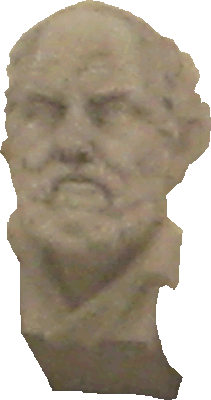
Hippocrates of Kos
* around 460 BC on the Greek Aegean island of Kos; † around 370 BC in Larisa, Thessaly), is considered the most famous physician of antiquity.
Hippocrates of Kos was one of the most famous physicians of antiquity. He was a contemporary of Plato and founded scientific (empirical-rational) medicine, as well as its theoretical and practical basis. As the son of the physician Herakleidas, he was taught by him and introduced to traditional medicine; his lineage can be traced back to the healing god Asclepius. He later went on tour as a physician and traveled through Greece and Asia Minor, gaining fame and recognition throughout the country. After his return to Kos, he continued to practise and wrote down his findings in over 60 treatises in the Corpus Hippocraticum. The date of origin of these writings ranges from the 4th century B.C. to the 1st century A.D. It is largely unknown which of them were written by Hippocrates himself. Among other things, he wrote about symptoms of illness, descriptions of individual ailments, dietary instructions, diagnoses and prognoses. He taught medicine in a school he founded himself and was already revered as a demigod during his lifetime. His portrait can be found on conical bronze coins from the early imperial period.
Hippocarates placed the relationship between humans and their environment and their dependence on it at the forefront of his observations; he saw illness as a deviation from the balance of bodily fluids. He observed systematically, made diagnoses and then treated not only the illness itself, but the whole person. He tried to support and mobilize the natural healing powers through diets, lifestyle changes, herbal medicines and surgical interventions. Hippocrates' ideologies were of great importance to Plato, the founder of Greek natural philosophy (idealism).
For many people today, the name 'Hippocrates' is synonymous with the attributes of an ideal physician with profound professional expertise, ethical principles and high moral standards. His writings contain the famous so-called Hippocratic Oath, although it is disputed whether this was written by Hippocrates himself.
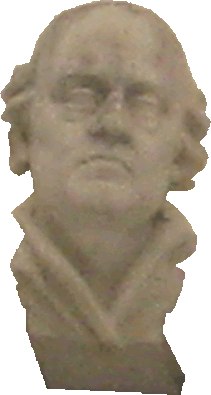
Paracelsus
Philippus Theophrastus Aureolus Bombast von Hohenheim,
baptized as Theophrastus Bombast von Hohenheim, called Paracelsus;
* probably November 10, 1493 in Egg near Einsiedeln; † September 24, 1541 in Salzburg;
physician, alchemist, astrologer, mystic, lay theologian and philosopher.
Phillippus Aureolus Theophrastus Bombastus von Hohenheim was the son of the physician and chemist Wilhelm Bombast von Hohenheim.
Even as a child, his father allowed him to accompany patients during their treatments. His parents took him to collect medicinal plants, explained their properties and effects to him and he took an active interest in the preparation of herbs and minerals and their processing into medicinal mixtures.
He attended several secondary schools, e.g. in Vienna and Ferrara, and learned from a renowned alchemist about such things as the processing, nature and properties of minerals, salts, rocks and metals, as well as the production of the purest possible forms of chemicals such as gold, arsenic, mercury and others using various scouring techniques.
As a student in Freiburg and Strasbourg, among other places, he often met with resistance due to his unconventional and direct manner, frequently opposing the dogmatic schemata of his time, but also the institutional authorities. Nevertheless, in 1510 he obtained a bachelor's degree in medicine in Vienna, and in 1515 he was awarded a doctorate in medicine in Ferrara, Italy.
His path led him to Salzburg in 1524, and in 1527 he was appointed city physician and thus also university lecturer in Basel, from where he had to flee again in 1528 due to his idiosyncrasies and revolutionary ideas. He first used the name "Paracelsus", whose origin is unclear, in 1529 in a work printed in Nuremberg. He spent quieter times in Strasbourg, where he taught at the School of Wound Medicine. His wandering years through southern Germany, Switzerland and Austria are characterized by his bustle, his thirst for adventure and his thirst for knowledge. He traveled to Ireland, Constantinople and Russia. He died in Salzburg on September 24, 1541 at the age of 48, impoverished and lonely.
Despite his unsteady, exhausting life, he left behind almost two hundred scientific works in which he wrote down numerous treatments for all kinds of illnesses. His remedies were always medicines from the "natural pharmacy", which were not intended to harm the patient in any way. He studied the effect of water on people and found new ways of treating gout, rheumatism, gallstones and kidney stones. His interest in alchemy led to fundamental findings in the field of chemotherapy. Paracelsus was the first to assume that lung diseases in miners were not caused by evil spirits, but by inhaling metallic "vapors". He was the first to establish a connection between low mineral content in drinking water and the spread of goiters. His treatise on syphilis was groundbreaking; it was the first to propose treatment with a mercury mixture. One of his best-known theses is: "Dosis facit venenum" (The dose makes the poison).
Like Hippocrates, Paracelsus believed in a treatment that was based on the body as a whole and on the healing powers of the body itself. Among the physicians of his time, Paracelsus was a blatant outsider. Over the years, however, his extraordinary healing successes earned him the reputation of a miracle doctor, much to the annoyance of the established medical profession, who accused him of "quackery". He insulted his colleagues, who no longer adhered to the Hippocratic principles, as "quacks" who only thought about their own pockets. Among other things, he is known to have said: "Many lords and emperors have to die prematurely because their doctors help them to die more than to live."
He also turned the pharmacists against him by describing them as abettors of the doctors and manufacturers of "filthy medicine". This accusation was based on the common practice of pharmacists at the time, e.g. to advertise crushed mummified body parts, dried herbs mixed with excrement and other things as remedies.
See also: de.wikipedia.org/wiki/Paracelsus
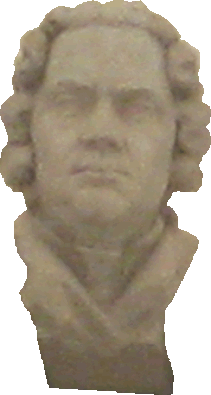
Hermannus (Herman) Boerhaave
* December 31, 1668 in Voorhout near Leiden; † September 23, 1738; Dutch physician and botanist. His official botanical author abbreviation is "BOERH."
Considered an outstanding clinician and medical teacher in his time. He was the founder of academic medical lectures and modern clinical observation of the sick. Among other things, he introduced the thermometer and the magnifying glass to patient care and was one of the first to give practical lessons at the bedside.
See also de.wikipedia.org/wiki/Boerhaave
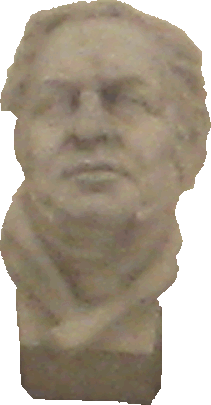
Johann Lukas Schönlein
* November 30, 1793 in Bamberg; † January 23, 1864 Bamberg; German physician
By introducing scientific methods in diagnostics, he fundamentally reformed and modernized German medicine. He used new physical and chemical examination methods, tapping and listening to the body surface (percussion, auscultation) as well as blood and urine analyses.
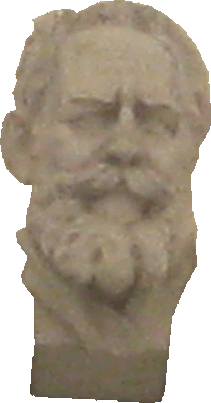
Carl Wilhelm Hermann Nothnagel
* September 28, 1841 in Alt-Lietzegöricke in the Mark Brandenburg; † July 7, 1905 in Vienna; German internist
1872-1874 Professor of Medical Polyclinic and Pharmacology, Faculty of Medicine in Freiburg.
He carried out experimental research into the nerve movements of the cerebral vessels, the development of convulsions, hypersensitivity and insensitivity in neuralgia, neuritis and reflex paralysis. He received special recognition for his experimental studies on the functions of the brain. Based on his experience and his documented observations, he determined the extent to which the localization of a disorder within the brain can be inferred from signs of illness.
University Library Heidelberg
Essay by Grete Mecenseffy
Remembrance of Prof. Dr. Nothnagel
Saturday, July 8, 1933, from 'Badener Zeitung' (Austrian National Library)
Above the main entrance to the Medical Clinic

| The illustration depicts the following personalities (from left to right): | ||
| Hippocrates v.Kos|Paracelsus|H.Boerhaave|J.L.Schönlein|H.Nothnagel |
University Medical Center Freiburg
Hugstetter Straße 55
79106 Freiburg
Phone: 0761 270-0
info@uniklinik-freiburg.de

